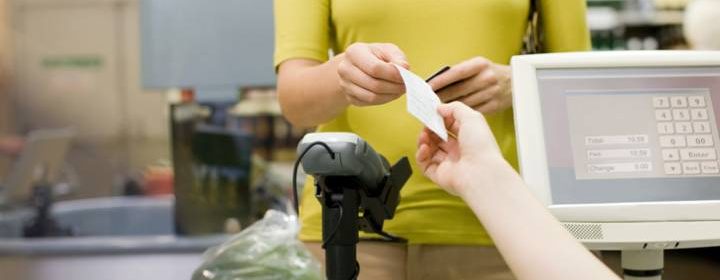BPA isn’t just in bottles — a new report is sounding the alarm over receipts

Canadians are handling receipts on a nearly daily basis — at the mall, at a restaurant or at the movies.
But a new study from Environmental Defence warns Canadian about the use of chemicals BPA and BPS on receipts.
BPA, or bisphenol A, first became commonly known when it was banned by the Canadian government from baby bottles and sippy cups in 2010 — over concerns over possible negative health effects. The chemical mimics estrogen and has been linked to hormone-related side effects including infertility and breast and prostate cancers.
Although it’s banned from baby products, it’s still found in food packaging — it was designed to prevent the lead in metal containers from entering people’s food, Prof. Miriam Diamond explained.
“In 2016, approximately 8 million metric tonnes of BPA were used globally, and its consumption is projected to grow to 10.6 million metric tonnes by 2022,” the report reads.
Health Canada says “the current dietary exposure to BPA through food packaging is not expected to pose a health risk to the general population, including newborns and infants.”
But the warning from Environmental Defence is bringing light to another way for BPA — and other similar chemicals — are exposed to humans: through a coating on thermal paper — commonly known as receipts.
“The amount of BPA in receipts can be a thousand times greater than the amount put into the lining of a food can,” the report states.
Dr. Frederick vom Saal of the University of Missouri said there have been hundreds of studies that show BPA has been linked to hormone-related issues like miscarriage, diabetes, obesity and reproductive issues.
“There are, you know, a whole pile of studies relating to that,” he explained. “That’s not a single finding.”
On receipts, the BPA has been entering the bloodstream through skin contact, studies have shown. When the skin is wet, more chemical was absorbed, the studies show.
For this reason the European Union had declared BPA as a proposed “substance of very high concern,” and intends to ban it from receipts by 2020.
Muhannad Malas, toxics program manager at Environmental Defence, says Canada should follow suit.
“The issue of exposure to toxic chemicals is not an insignificant issue,” Malas told Global News. “Health Canada’s response to our report was that they don’t think the risk is high enough for them to take action but that’s against what the entire world is saying about BPA.”
What are the replacements?
Malas explained that BPA is increasingly replaced by BPS in many products after BPA got a bad rap in 2010.
But he said the science is pointing to very similar harmful impacts from BPS because they’re structurally almost identical.
“There are a whole bunch of different bisphenols that are slightly different and some of which, [regarding] concerns of the toxicity, it could be equivalent to or even more toxic than BPA,” Diamond explained.
Malas said he wants all types of the bisphenol chemicals removed from receipts — to ensure the safety of Canadians.
“Especially retail workers because they’re the ones who are at the frontlines of this issue and are the ones who are exposed to it the most,” he said.
But Diamond warned that a suitable alternative hasn’t yet been presented.
“They banned bisphenol A baby bottles at a point where it wasn’t clear what the safe alternatives were. And that’s where you get this proliferation of the BPS.
“The critical point is the lack of understanding of the toxicity of the replacement,” she said. “You can’t just go and freak out about one chemical and then rush to replace it with something else — it could be even worse, which is what we call it a regrettable substitution.”
What industry needs to do is “figure out what the safer alternative is,” she explained. She said the challenge is that industries have invested majorly in this paper — and it would be a major endeavour to change how we issue receipts.
Source: Read Full Article



